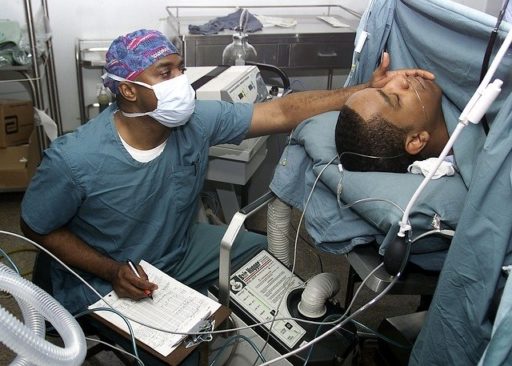Early in the coronavirus pandemic, my colleague on this Close Reading blog, Brian Volck, wrote a post highlighting prose works that have dealt with pandemics. That gave me the idea to gather poems on the subject.
Naturally, I thought first of Rafael Campo, physician and poet who began his medical career tending AIDS patients in San Francisco in the 1980s. In an early poem, “Ten Patients, and Another,” he writes:
Another AIDS admission. This one’s great:
They bring him in strapped down because he threw
His own infected shit at them—you better bring
Your goggles!—and a mask, we think he’s got
TB.
Probably the best poet to write about her own experience of living with HIV was Tory Dent, who was diagnosed with AIDS at age 30 and died from it at age 47. In between, she published three poetry collections focused mainly on her illness. (One, HIV, Mon Amour, was a finalist for the National Book Critics Circle Award.) It’s hard to choose which of her AIDS poems to give you a taste of… but here’s an excerpt from “R.I.P., My Love,” reflecting on one of her many hospitalizations:
The blood pressure cuff swaddled around my arm pumped in its diastolic state
independently like an iced organ ready for transplant
as I witnessed with one circular rove of my eyes my body now dissected
into television sets, like one of those asymmetrical structures
that serves as a model for a molecular unity in elementary science classes.
And the plastic bags of IV fluids that hung above me, a Miró-like mobile or iconic toy
for an infant’s amusement, measured the passing of time by virtue of their depletion.
Dent’s images here are, given the darkness of her situation, surprisingly light and fun: the “iced organ ready for transplant,” her body “dissected / into television sets,” the IV bags “a Miró-like mobile or iconic toy.”
Interestingly, Lucille Clifton also draws on the image of children’s toys in her poem “cancer.” (The unspoken point, I think, is that serious hospitalization can infantilize us.)
Cancer is not, strictly speaking, a pandemic—since it’s not contagious. But it’s still, now along with COVID-19, the most feared diagnosis to confront. In “cancer” (in her collection Mercy), Clifton gives us her reaction to the diagnosis:
the first time the dreaded word
bangs against your eyes so that
you think you must have heard it but
what you know is that the room
is twisting crimson on its hinge
and all the other people there are dolls
watching from their dollhouse chairs
Clifton’s cancer was in her breast, so after the diagnosis came the mastectomy. And after that? The absence, the nothing. Here’s Alicia Ostriker, from her “The Mastectomy Poems” (in The Crack in Everything). Looking under her hospital gown and under “my square of gauze,”
It doesn’t need a hanky
Or a dolphin grin…
It was not drawn with a crayon
Brushed on with watercolor
Or red ink,
It makes a skinny stripe
That won’t come off with soap
A scarlet letter lacking a meaning
Guess what it is
It’s nothing
And Lucille Clifton again, on the same nothingness (from “in the mirror,” in Mercy):
an only breast
leans against her chest wall
mourning she is suspended
in a sob between t and e and a and r
and the gash ghost of her sister
The poem goes on to make explicit that the “tear” is pronounced both ways: “like crying” and “like / being torn away.”
There have long been poems on the horrors of cancer. But now we already have poems engaging the coronavirus pandemic. Here’s an excerpt of one of the many on the website of the Academy of American Poets—”When the Virus Comes,” by Angelo Geter:
They will tell you to turn your kitchen into a panic room,
basement into fallout shelter.
Instruct you to grab everything you can,
while you still can.
They will say
the shelves at the stores are empty,
and not realize they are also talking about you.
They will preach from the gospel of quarantine.
Shout parables of
“Thou Shalt wash thine hands.”
“For God so loved the world
he socially distanced himself
from the very people he wanted to save.”
I enjoy the unexpected play of these lines—and also of this poem by Maureen Doallas, “They’ve Stopped Playing.” She posted it on her blog, Writing Without Paper on May 14, 2020. Doallas notes there that the poem was inspired by artist Ben Shahn’s delightful painting Still Music.
They’ve stopped playing
musical chairs the way
we’re used to: no violinists
up front, slightly off-center,
their smooth fingering
and bowing everything
we’ve come to expect.
No dropping by rehearsal.
The concert hall curtains
are drawn, first chairs all
wily-nily, stands empty
of notes, sharps and flats
inaudible, double-doors
locked against pandemic entry.
Musicians, sheltering
at home, risk the noise
complaints to practice,
knowing no one can tell
them when intermission
will end, when each will
rise from a hard-back seat
and nod encores to the end
of spring’s sullen silence.
No, we don’t know when this intermission we’re living in will end. Before it does, I expect a lot more poems to come out of it. That’s already been the experience of Dr. Rafael Campo, who’s now Poetry Editor of The Journal of the American Medical Association. In a fascinating interview from August, Campo says he’s been receiving increasing numbers of poems during this pandemic: over a hundred each week. The interviewer asks him: “Why do you think poetry has become so important to so many doctors during the pandemic?”
Campo’s reply: “I think doctors in particular are really searching for ways to give voice to their experiences of this terrible disease and what we’re all going through in confronting it.
“It’s particularly poignant, I think, because we’re so isolated by this virus. We’re all practicing physical distancing and social distancing, so I think poetry becomes a way of connecting with other people and having our story heard. So I find it actually really energizing. It helps me feel less isolated, less disconnected, as I read through these poems.”
Peggy Rosenthal has a PhD in English Literature. Her first published book was Words and Values, a close reading of popular language. Since then she has published widely on the spirituality of poetry, in periodicals such as America, The Christian Century, and Image, and in books that can be found here.





